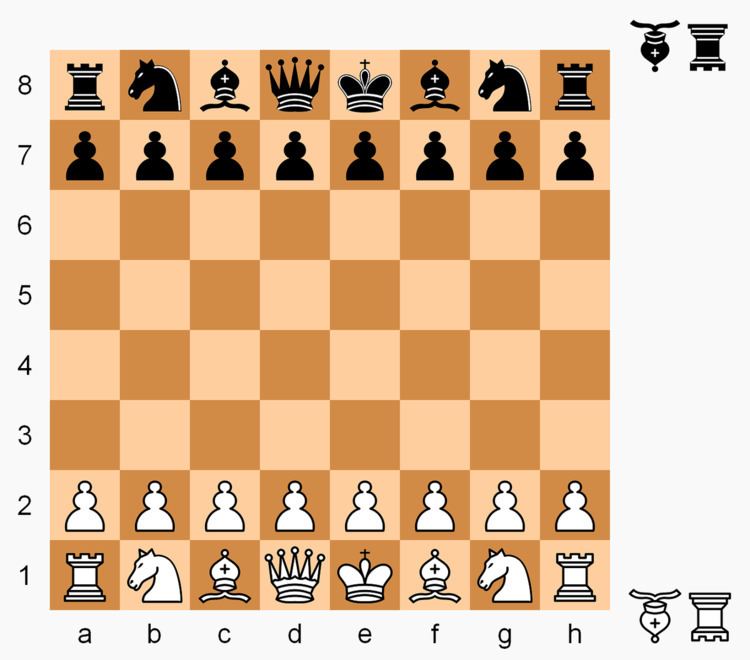 | ||
Falcon-Hunter Chess (also called Schultz's Chess, One-Way Chess, or Meso Chess) is a chess variant invented by Karl Schultz in 1943 employing the two fairy chess pieces falcon and hunter. The game takes several forms, including variations Hunter Chess and Decimal Falcon-Hunter Chess added in the 1950s.
Contents
Moves of the falcon and hunter
Neither piece can move along a rank. The pieces capture the same as they move.
Falcon-Hunter
All the rules and conventions and objective of standard chess apply, including the starting setup. The falcon and hunter start the game off the board and out of play (see diagram). Once a player loses (or exchanges) his queen, a rook, a bishop, or a knight, he may, on any subsequent move, enter his falcon or hunter into play on any empty square of his home rank. Doing so constitutes a turn. The player becomes eligible to enter his remaining fairy piece (falcon or hunter) after losing a second piece (queen, rook, bishop, or knight). A move entering the falcon or hunter into play may also give check.
Variations
Decimal Falcon-Hunter
Decimal Falcon-Hunter Chess (also known as Great One-Way Chess), invented in the 1950s, is played on a 10×10 board with the falcon and hunter already in the starting setup (see diagram). All the standard chess rules and conventions apply, with the following differences:
